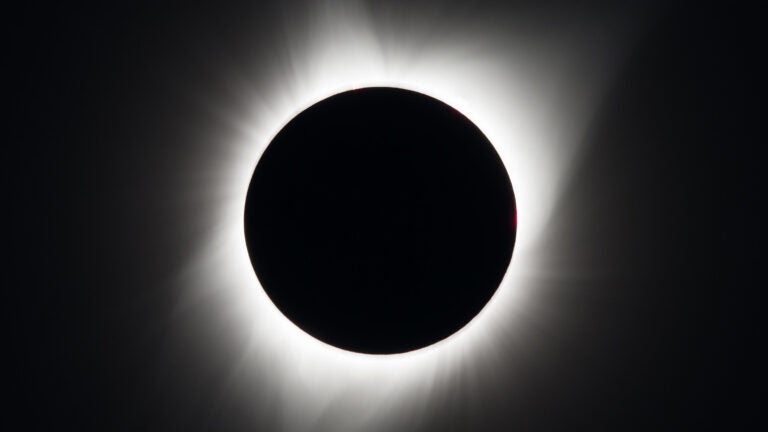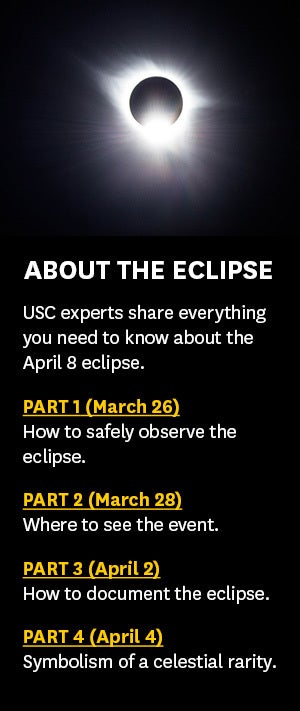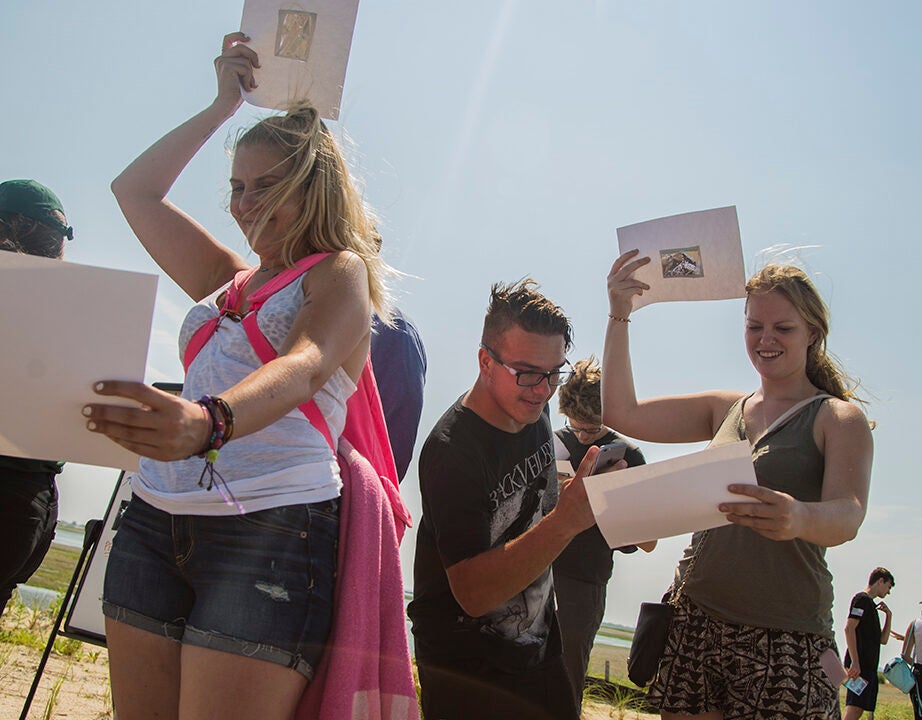
Total solar eclipses are rare phenomena; on April 8, 2024, one will be visible from the contiguous United States for the first time since 2017, when this photo was taken in Madras, Ore. (Photo: NASA/Aubrey Gemignani)
How to watch the eclipse
Looking at the solar eclipse without protective eyewear can cause blindness; here’s how to view it safely.
Total solar eclipses — which occur when the moon passes between the Earth and the sun, temporarily blocking the sun’s brilliance — are rare phenomena. On April 8, 2024, a total solar eclipse will be visible from the contiguous United States for the first time since 2017, and the next one won’t be seen from U.S. soil until 2044.

In USC News’ four-part series on the eclipse, USC experts weigh in on all aspects of this extraordinary celestial event: how to safely view the eclipse, the best place to see it, how to photograph it, and its symbolism.
Part 1: How to view the eclipse
The total solar eclipse on April 8 will be visible along a 115-mile-wide track called the path of totality — where the moon will completely block the sun for up to 4 minutes and 28 seconds, depending on the location. That path stretches from southwest Mexico to northeast Canada and will cross 15 U.S. states, from Texas to Maine.
Outside of the path of totality, a partial solar eclipse will be visible in all 48 contiguous states.
Whether you’re able to see a partial or total eclipse, it’s imperative to watch the spectacle with, well, spectacles (or handheld solar viewers)! Gazing directly at the sun without specialized protective eyewear can cause irreversible eye damage and blindness.
Why the eclipse can harm your eyes
Hossein Ameri, associate professor of clinical ophthalmology and director of the USC Retinal Degeneration Center at the Keck School of Medicine of USC, compared looking directly at the sun to holding a magnifying glass to it. A magnifying glass focuses the sun’s light into a bright spot that creates so much heat that it can start a fire when directed over a piece of paper.
“The eye is a very strong magnifier,” Ameri said. “When we look at the sun, instead of burning a piece of paper, we burn the light-sensitive membrane in the back of the eyes called the retina.”
The best glasses for the eclipse
To prevent damage, eclipse glasses and handheld solar viewers must contain a special solar filter that blocks the sun’s harmful UV and infrared rays. Ameri recommended using eclipse glasses and handheld solar viewers approved by the American Astronomical Society, which comply with the ISO 12312-2 international safety standard for filters.
Ameri advised against using alternative means to filter the sun’s rays. On TikTok and other social media platforms, users have popularized obsidian glass as a protective filter, but using obsidian is risky, according to Ameri.
He noted that if protective glasses or handheld solar viewers aren’t available, the eclipse can also be viewed indirectly by creating a pinhole in a piece of paper and keeping your back to the sun while looking at a pinhole projection. “You can see the image of the eclipse on the wall or the floor,” he said.

Those in the path of totality may look directly at the eclipse during the brief interval when the sun is completely blocked by the moon, preventing its rays from reaching the eye. But Ameri cautioned that the time without protective eyewear should not extend beyond the total eclipse, and misjudging the timing even slightly can lead to damage.
“Looking at the sun for a few seconds is enough to burn the retina,” he said.
What eclipses teach us about the eye
There is no known treatment to reverse retinal burns caused by eclipse viewing, yet modern ophthalmology owes much to eclipses.
In 1945, after a solar eclipse, the German ophthalmologist Gerhard Meyer-Schwickerath observed central retinal burns in patients and began researching if controlled burns by physicians in the periphery of the retina could be used to treat eye diseases.
“That led to the development of laser photocoagulation, which today we use on a daily basis for retinal detachment, diabetic retinopathy and many other conditions,” Ameri said.



